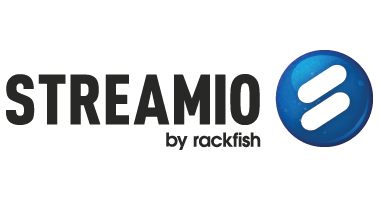Live transcoding
Life transcoding is the best thing that ever happened to your live streams! It’s super simple to use, thanks to the fact that no additional settings are needed. It just works and allows all viewers to watch the live broadcast with the best possible quality.
Why have live transcoding?
When live streaming with Streamio without live transcoding, we recommend broadcasting at a resolution of 720p at 2500 kbps. The reason for not wanting to broadcast with too high a resolution and bitrate is that there is a risk that some viewers with poorer connectivity may receive a substandard broadcast that chops and buffers.
If you’re live streaming with live transcoding instead, you can go up to 1080p resolution at 6000 kbps, or even higher. The live transcoder will automatically transform the original stream into a number of different streams with adjusted quality.
For viewers, the player will select the best stream suited for the device and connection being used. So the viewer on a fast connection will automatically see the best quality. In contrast, another viewer on a mediocre mobile connection will see a lower resolution without the broadcast chopping or buffering. If a higher resolution stream had been broadcast without live transcoding, viewers with poorer connections would probably have received a poorly performing broadcast.
Learn more about live transcoding & automatic adaptation
Live transcoding
Live transcoding is a technique where a high-quality stream is transmitted and automatically processed into a number of lower-quality streams. All streams are then made available to the viewer.
Automatic alignment
The player automatically selects the level of quality that the user's device and connection can handle. It can vary over time, and the user can change it manually. This is sometimes called ABR (adaptive bitrate streaming).
Benefits
With live transcoding and ABR, you can easily send a stream to Streamio that is adapted so everyone can receive it. Ideal when you want to be able to press the envelope for content that requires a bit more.
How do I live stream with live transcoding?
After you’ve ordered the service and we’ve activated live transcoding on your Streamio account, you’ll have everything you need. The only thing you need to consider now is that you need to broadcast at a resolution of 1080p and a bitrate of 6000 kbps. Read more about our recommended settings for live streaming here, both with and without live transcoding. You can always see whether the live stream is live transcoding under Status on the Live-stream tab.
Streamio’s live transcoding service can be ordered as a permanent add-on or for a specific event if you don’t use it regularly.
How much does live transcoding cost?
Live transcoding is an additional service that can be added to any existing Streamio account. You can buy the service monthly for 49 €/month (charged annually) or for a single event (30 days) for 99 €. If you have an Enterprise plan with three Streamio accounts, the cost will be 120 €/month if you want live transcoding for all three accounts. If you have a Pro plan with ten Streamio accounts, the cost for live transcoding for all ten accounts will be 300 €/month instead. Get started by sending us a message here or order yourself at my.rackfish.com.
How does adaptive streaming work?
Live transcoding is the service that takes an incoming video stream and transforms it to a number of other qualities. These are sometimes called ABR ladders or encoding ladders. Each stream in the encoding stage is divided into different segments (chunks), each segment usually lasting around 10 seconds.
The user’s video player starts by downloading a manifesto. This manifest describes the streams available; from this list, the player can start playing – often at a slightly lower quality and then switch up in quality. If the player has problems with a higher quality (on mobile networks in particular, bandwidth variations are common), it can also go down to ensure good playback.
